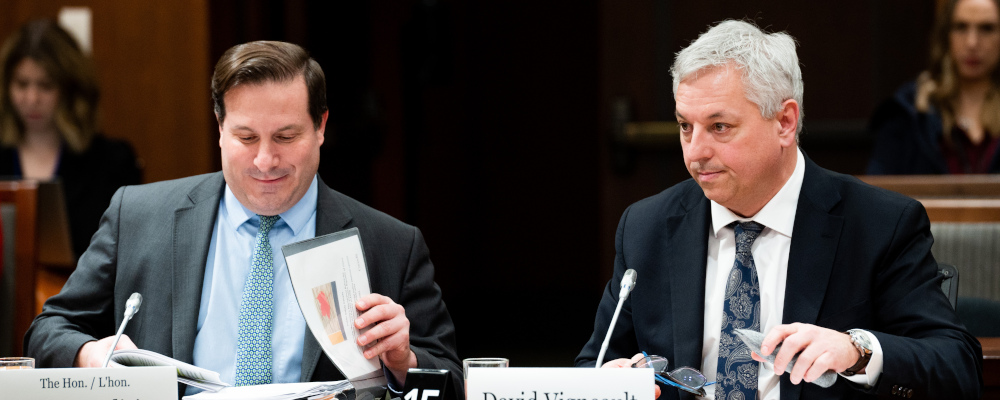The past few weeks have seen a significant level of discussion about national security surrounding Chinese election interference. A fair bit of focus has been paid to the motivation and justification of the intelligence official who has been providing the initial leaks.
Personally, I have generally avoided discussing this area, because domestic national security is not my area of expertise, though I have a broad working knowledge of it. However, the dynamics in these departments are likely very similar to those that I’m much more familiar with in defence and foreign affairs.
To start, it is important to note that the relationship between the political leadership, the bureaucracy, and the public (in particular the press and other parts of the civil society) has changed over the past 30 years. This is likely the most evident in the Department of National Defence (DND).
In the early 2000s, DND operated in a post-Somalia system. As a result of the Commission of Inquiry into the events surrounding the deeply problematic Canadian intervention in that country, the relationship between these three groups underwent significant reform. DND worked to become more open and transparent in its relationship with the press. Subject matter experts were often made directly available to media and Access to Information and Privacy (ATIP) provided a reasonably quick response to queries. In short, it helped to build trust between government and the public, likely contributing to a better-informed populace.
However, this has changed in recent years, in part due to the political leadership’s desire to increase message discipline. The Afghan war provided a major push for message discipline, partly due to its military benefits. Talking points were pushed by the Harper government’s prime minister’s office downwards to public relations staff, while access beyond this frontline staff became increasingly limited.
Yet this process did not end with the withdrawal of forces from Afghanistan—rather its trajectory has continued afterwards. It is some irony that one of the campaign promises of candidate Justin Trudeau in 2014 was to unmuzzle the scientists as part of a broader effort to contribute to transparency in government. Instead, over his time in power, it has been the opposite. Government has become even less open and transparent. ATIPs have been exceptionally slow; many requests are four years old. Few events better define this effort than the 2017 gag order placed on individuals working in the Canadian Armed Forces (CAF), or the charge against Mark Norman on breach of trust for leaking information to the press.
While the political leadership was effective at cowing DND, this is not simply a one-directional change. According to Donald Savoie, while the bureaucracy has remained non-partisan, political communication has been increasingly conflated with the activity of governing and thus its day-to-day work has become increasingly political in nature.
Essentially, what has occurred is that the barriers between the bureaucracy and the public at large have increased. This has limited the former’s ability to disseminate its views and knowledge on policy matters, which had previously provided more context and consistent messaging to better inform the public. The political leadership has effectively curtailed this avenue, largely for its perceived political benefit.
At the same time, Canadians’ knowledge and interest in foreign affairs have waned, despite the growing complexity and challenges facing the country from abroad. For people involved in defence (and I again presume it’s the same in domestic security agencies), there is an acute awareness of these deepening challenges, as well as some of the disconnect between them and the public. This is not to suggest that message control is the only or even the primary factor in this lack of foreign and defence knowledge, but it is an undeniable one.

For many of these public servants, the ability to raise awareness about these issues, even in an oblique way, seemingly does not exist anymore. There is no recourse for raising the prominence of these issues; successive governments have effectively been able to close off those legal avenues to express their perspectives.
Of course, Canadian national security agencies, which have long been shrouded in secrecy, did not enjoy a similar period of openness as DND or other parts of the bureaucracy. Yet what has happened with DND in recent decades has been a move towards greater secrecy, often for political purposes, that made their relationship with the public more like Canada’s traditionally more secretive intelligence agencies.
With no alternate venue to express these concerns, or have them addressed, defence officials often feel apprehension and dismay at the situation. Many individuals in National Defence have resigned or quit their positions over policy disagreements—it is a contributing factor in the retention crisis gripping the military today. One can surmise that similar feelings might also be reflected in Canadian national security agencies.
While much remains unknown about why the intelligence official(s) decided to leak information to the press, it is certainly possible that they might’ve been similarly motivated—a fact that is at least evident in the Globe and Mail article from one of the leakers.
The present dynamics between the political leadership and the bureaucracy are built on the concept that the political leadership interests are the same as the broader national interest. National security should transcend political interests and be understood as part of the broader public interest. The worry that this is not always true has led to the extraordinary moment we are in now. Reform that provides greater transparency, communication, and oversight would improve the situation for everyone involved.
Recommended for You

Trevor Tombe: How is Carney going to pay for his commitments? There are some tough choices ahead

Need to Know: Legacy media has a diversity problem

‘Can we actually be an independent country?’: Michael Ignatieff on the 60th anniversary of Lament for a Nation

Fred DeLorey: Why the NDP may be in even bigger trouble than we think




